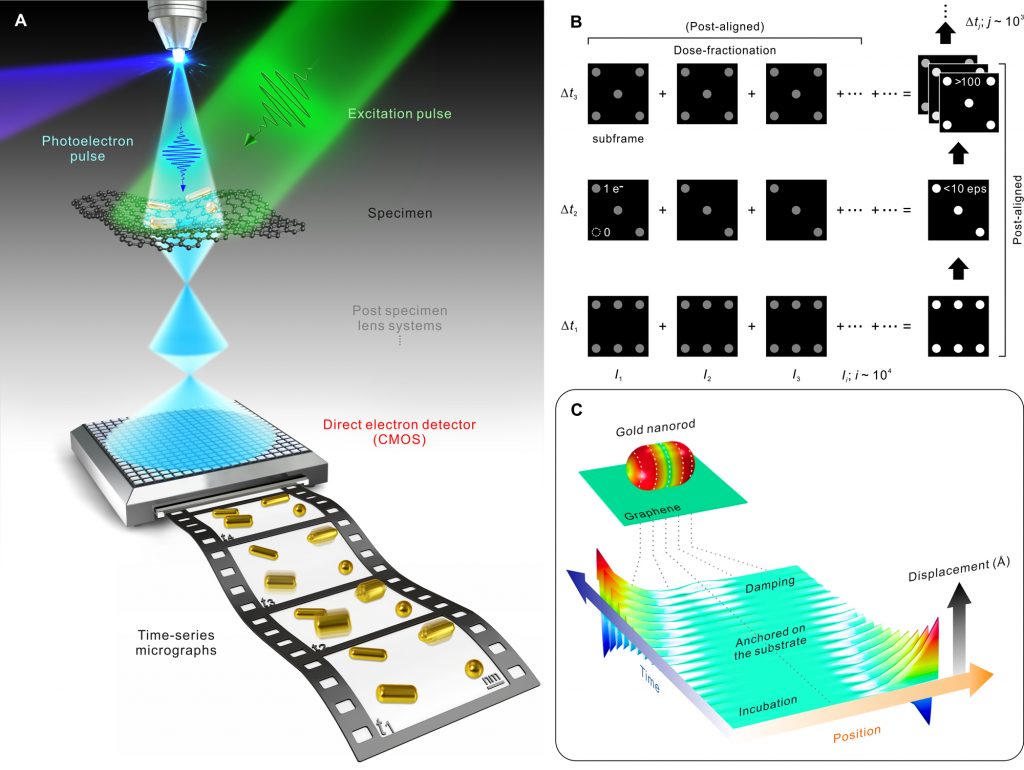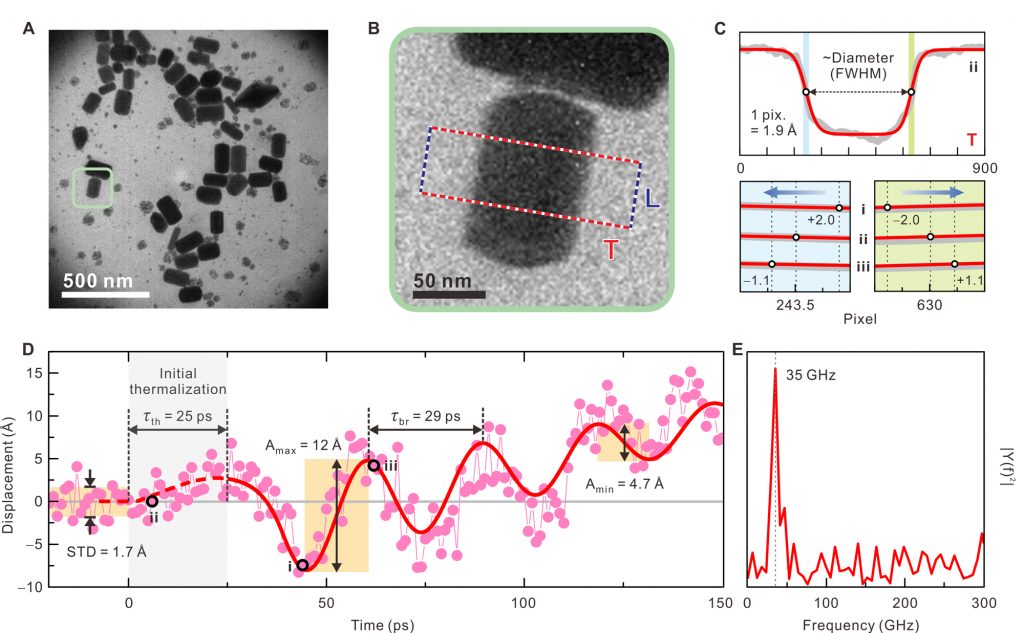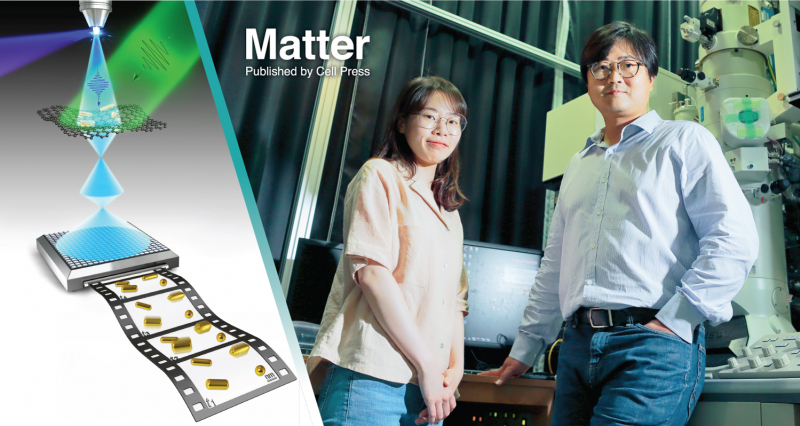All matter is made up of particles, called atoms and molecules. In most solids, these particles are closely packed together, thus seem unable to move about within the substance. The particles are, however, still in constant motion. A new ultrafast electron microscope, capable of capturing the movement of such particles, like filming a movie, has been developed and this has been attracting much research attention.
A research team, led by Professor Oh-Hoon Kwon in the School of Natural Sciences at UNIST has reported an analytic method that can observe structural changes of materials that are one nanometer amplitude or less in the range of femtoseconds, using the utrafast transmission electron microscope (UEM). In this work, with the aid of a highly sensitive camera, the research team unveiled the real-time observation of structural changes in gold nanorods (NRs) by external energy. Their findings have been published in the August 2019 issue of Matter, a sister journal to Cell.
Despite recent advances in UEM allow time-resolved studies up to hundreds of femtoseconds, objects that are one nanometer amplitude or less were still difficult to identify. On the other hand, electron microscopes that use a beam of electrons can control the beam speed to realize femtosecond-level time resolution, while simultaneously observing objects with diameters less than a nanometer.

Figure 1. High-Resolution Ultrafast Electron Microscopy
In this work, the team has successfully controlled UEM that use a beam of electrons in femtoseconds for visualizing acoustic vibrations of gold NPs in femtoseconds. Lasers (optical pulses) are applied to the gold NPs to generate acoustic vibrations, and electron beams are emitted in femtosecond units to capture the changes over time. The images captured at femtosecond intervals are stitched together to create a nanoparticle film.
In addition, with the aid of a highly sensitive camera, the spatial resolution of an ultrafast electron microscope was improved by an order of magnitude, imaging acoustic vibration of individual nanorods with the sensitivity of several angstroms.

Figure 2. Identification and Quantification of Acoustic Vibration of Single NR
“The combination of a direct electron detector with UEM for visualizing acoustic vibrations of nanostructures at high spatiotemporal limit is by far the first attempt in the world,” says Ye-Jin Kim in the School of Natural Sciences at UNIST, the first author of the study. “Through this, we succeeded in visualizing the dynamics of acoustic vibrations at a single particle detection sensitivity in both the time and space domains.”
“Understanding the structural dynamics of materials is an essential area of science for developing new materials and improving the performance of existing materials,” says Professor Kwon. “We are now one more step closer to filming atomic motions. Once realized, the time-resolved imaging with truly atomic spatiotemporal resolution would also yield a wealth of quantitative knowledge pertaining to structure, dynamics, and function in highly correlated systems.”
This study has been carried out with the support from the National Research Foundation (NRF), the Institute for Basic Science (IBS), and the Samsung Advanced Institute of Technology.
Journal Reference
Ye-Jin Kim et al., “Ultrafast Electron Microscopy Visualizes Acoustic Vibrations of Plasmonic Nanorods at the Interfaces,” Matter, (2019).
















